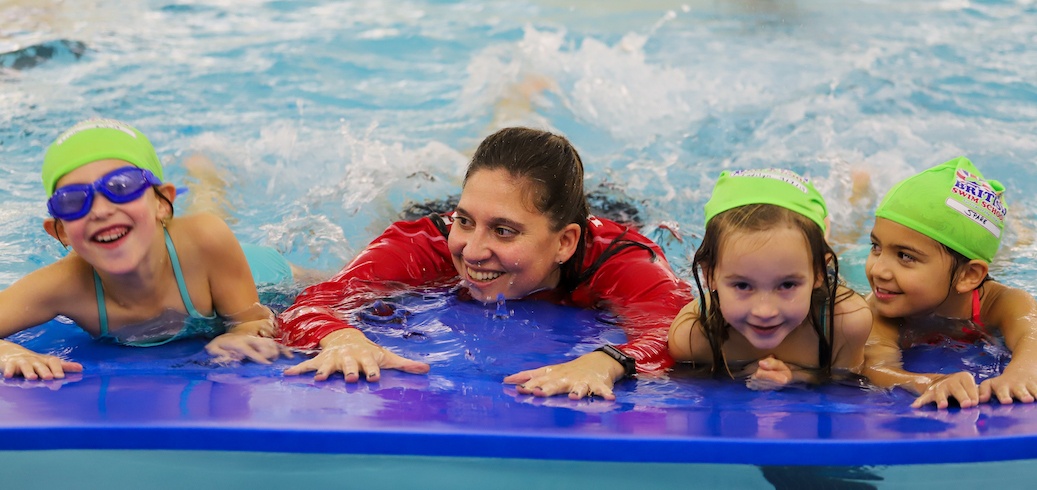Swimming is an essential skill that offers numerous advantages for children, from boosting confidence to improving physical fitness and promoting water safety. With various swim classes available, however, it can be difficult to choose the right one for your child. The ideal class will depend on your child’s age, skill level, personality, learning style, and the environment in which they will be taught. Below is a guide to help you select the perfect swim class for your child.
1. Assess Your Child’s Age and Skill Level
The first step in selecting the right swim class is to evaluate your child’s age and swimming proficiency. Swim programs are generally tailored for different age groups, ranging from infants to older children at advanced levels.
- Infants and Toddlers (6 months – 3 years): These classes focus on getting children comfortable with water, building trust, and teaching basic water safety. Parents often participate in these lessons for support.
- Preschoolers (3 – 5 years): Swim classes for this group typically emphasize the development of basic skills like floating, kicking, and swimming short distances. Basic water safety is also introduced.
- School-Age Children (6+ years): At this stage, there are classes for beginners, intermediate swimmers, and advanced levels. Beginners will learn essential swimming techniques such as breathing and basic strokes, while advanced swimmers will work on improving their technique and stamina.
By understanding your child’s age and swimming abilities, you can choose a class that matches their developmental needs.
2. Ensure Age-Appropriate Teaching Methods
Swim schools use different teaching styles based on the age and skill level of the child. It’s important to choose a class that uses appropriate teaching methods for your child’s age to keep them engaged and effectively learning.
- Infant and Toddler Classes: These classes often focus on water acclimation, teaching babies and toddlers how to kick, float, and stay safe in the water.
- Preschool and School-Age Classes: For older children, classes should focus on skill development, such as learning various strokes. The instructor should incorporate games and activities that make learning enjoyable while teaching water safety.
- Advanced Classes: For experienced swimmers, advanced classes focus on refining technique, building endurance, and preparing for competitive swimming. The lessons are more structured and concentrate on improving speed and performance.
3. Verify the Instructor’s Credentials and Experience
The qualifications of the instructor are crucial for your child’s safety and progress. Look for a swim class that employs certified instructors with experience in teaching children, particularly at your child’s age and skill level.
- Certification to Look For: Ensure the instructor holds certifications in CPR, first aid, lifeguarding, and any additional swimming teaching qualifications (e.g., Swim America, Red Cross).
- Experience with Children: The instructor should be skilled at managing children, encouraging them, and guiding them through the learning process. A good instructor should be patient and experienced in working with children of all ages.
4. Consider Class Size and Instructor-to-Student Ratio
Smaller class sizes tend to offer more personalized attention, especially for younger children who need more assistance. Ideally, the instructor-to-student ratio should allow for individualized feedback and support.
- Infant and Toddler Classes: These classes generally have a ratio of 1:6 or 1:8, as parents usually accompany their children during lessons.
- Preschool and School-Age Classes: For older children, look for a ratio of 1:4 or 1:5 to ensure your child receives sufficient attention.
Smaller classes help improve supervision, increase safety, and offer a more effective learning experience for your child.
5. Evaluate the Environment for Comfort and Safety
When choosing a swim school, check the pool’s environment for safety, cleanliness, and comfort. These factors play a major role in your child’s overall experience.
- Water Temperature: Make sure the pool temperature is suitable for your child’s age. Babies and toddlers often need warmer water, while older children can be comfortable in cooler water.
- Safety Features: Look for pools with safety equipment such as life rings and barriers around the pool. Lifeguards should also be present during all classes.
- Hygiene and Cleanliness: Ensure the pool and facility maintain high standards of cleanliness and proper hygiene, with regular cleaning of the pool and changing rooms.
- Location: Choose a facility that’s conveniently located and easy to access, making it more convenient for you and your child.
6. Observe a Class Before Committing
If the swim school offers a trial class or allows you to observe one, take advantage of this opportunity to evaluate the teaching style, class dynamics, and how the instructor interacts with the children. This will give you a better idea of whether the class will be a good fit for your child.
7. Take Your Child’s Comfort and Personality Into Account
Every child is unique, and their comfort level and personality should be considered when choosing a swim class. If your child feels anxious about water, look for a class that offers a gentle, reassuring approach. If your child is more confident, they may enjoy a more structured class with a focus on skill-building and technique.
If possible, opt for a fun and interactive class that keeps your child engaged. Games, music, and positive reinforcement can help build your child’s confidence and make the learning experience more enjoyable.

Tinggalkan Balasan